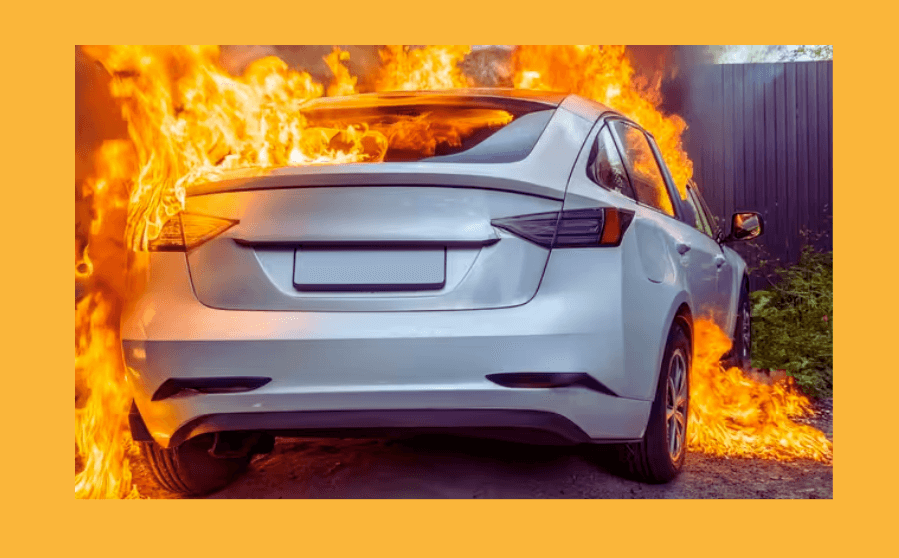Electric vehicles (EV) are transforming how we drive, offering cleaner energy and reduced emissions. However, one concern that continues to capture attention is the issue of battery fires.
These incidents, though rare, raise questions about safety and the evolving nature of EV technology.
I’ve spent time understanding this topic, and I’ll guide you through what causes battery fires in EV, their risks, and what’s being done to prevent them.
By the end of this article, you’ll have a clear understanding of this subject and why EV remain a promising and safe transportation choice.
Understanding EV Battery Fires
To grasp why EV battery fires occur, it’s essential to know how these batteries work. Most electric vehicles use lithium-ion batteries because of their high energy density and efficiency.
However, these batteries can become a safety risk if they’re damaged, improperly maintained, or subjected to extreme conditions.
A battery fire typically results from a process called thermal runaway. This occurs when the battery’s internal temperature rises uncontrollably, leading to chemical reactions that generate even more heat. If not managed, it can cause the battery to catch fire or explode.
Common Causes of Battery Fires

Physical Damage
Physical damage to an EV battery can occur during accidents or improper handling. When the battery cells are punctured or compressed, it can lead to short circuits and heat buildup, increasing the risk of fire.
Overcharging or Faulty Charging Equipment
Overcharging a lithium-ion battery or using damaged or incompatible charging equipment can create electrical imbalances. These imbalances may lead to overheating, which can eventually ignite a fire.
Manufacturing Defects
Although rare, manufacturing defects in EV batteries can cause internal short circuits or other malfunctions. Automakers rigorously test their batteries to minimize these risks, but no system is entirely foolproof.
Exposure to Extreme Temperatures
Excessive heat or cold can impact battery performance and safety. Prolonged exposure to high temperatures can cause the battery internal chemistry to degrade, increasing the likelihood of thermal runaway.
How Common Are EV Battery Fires?
Despite the headlines, EV battery fires are extremely rare. Statistics show that electric vehicles are less likely to catch fire than traditional gasoline-powered cars. Gasoline is highly flammable, making internal combustion engines more prone to fires in accidents.
However, because EV technology is still relatively new, any incident involving a battery fire tends to receive significant media coverage. This can create a perception that EV are more dangerous than they actually are.
Risks Associated with Battery Fires
While battery fires are uncommon, they pose serious risks when they occur. These fires can be difficult to extinguish because lithium-ion batteries burn at very high temperatures and may reignite after being put out. This is why emergency responders receive specialized training for handling EV battery fires.
Another concern is the release of toxic gases during a battery fire. These gases can pose health risks if inhaled, which is why proper ventilation and protective measures are crucial during such incidents.
Advances in EV Safety Technology
The good news is that automakers and battery manufacturers are continuously improving EV safety. Here’s how they’re tackling the issue of battery fires:
Improved Battery Design
Modern EV batteries are designed with multiple layers of protection, including thermal management systems that prevent overheating. Manufacturers also use advanced materials to make batteries more resilient to damage.
Battery Management Systems (BMS)
BMS technology monitors the health and performance of the battery in real time. It ensures that charging and discharging occur within safe limits and detects potential issues before they escalate.
Crash-Test Standards
Automakers subject EVs to rigorous crash tests to ensure that the battery pack remains intact during collisions. Protective casings and strategically placed reinforcements are used to minimize the risk of physical damage.
Research into Solid-State Batteries
Solid-state batteries are an emerging technology that could replace lithium-ion batteries in the future. They use a solid electrolyte instead of a liquid one, which reduces the risk of thermal runaway and makes them inherently safer.
As an EV owner, you can take steps to minimize the risk of battery fires:
Avoid physical damage to your vehicle, especially the undercarriage where the battery is located.
Use the manufacturer-recommended charging equipment and avoid overcharging.
Keep your EV away from extreme temperatures whenever possible.
Schedule regular maintenance checks to ensure the battery is in good condition.
Being proactive and following best practices can help you enjoy the benefits of electric vehicles while ensuring safety.
The Role of Regulations and Standards
Government agencies and industry bodies play a crucial role in improving EV safety. Regulations ensure that manufacturers adhere to strict safety standards during the design and production of EV. Testing protocols are constantly updated to address new challenges, such as battery performance in extreme conditions.
Consumer awareness campaigns also educate the public about safe EV usage and how to respond in case of emergencies.
Why EVs Are Still a Safe and Sustainable Choice
Despite the concerns surrounding battery fires, electric vehicles remain a safe and sustainable option for transportation. The advancements in technology, combined with robust safety measures, make EV a reliable choice for individuals and families alike.
EV not only reduce greenhouse gas emissions but also offer lower operating costs and a quieter, smoother driving experience. As the industry continues to innovate, these vehicles are becoming even safer and more efficient.
Final Thoughts
Battery fires in electric vehicles are a serious but rare issue. As technology advances, EV are becoming safer and more reliable, giving drivers confidence in their choice to embrace cleaner transportation.
